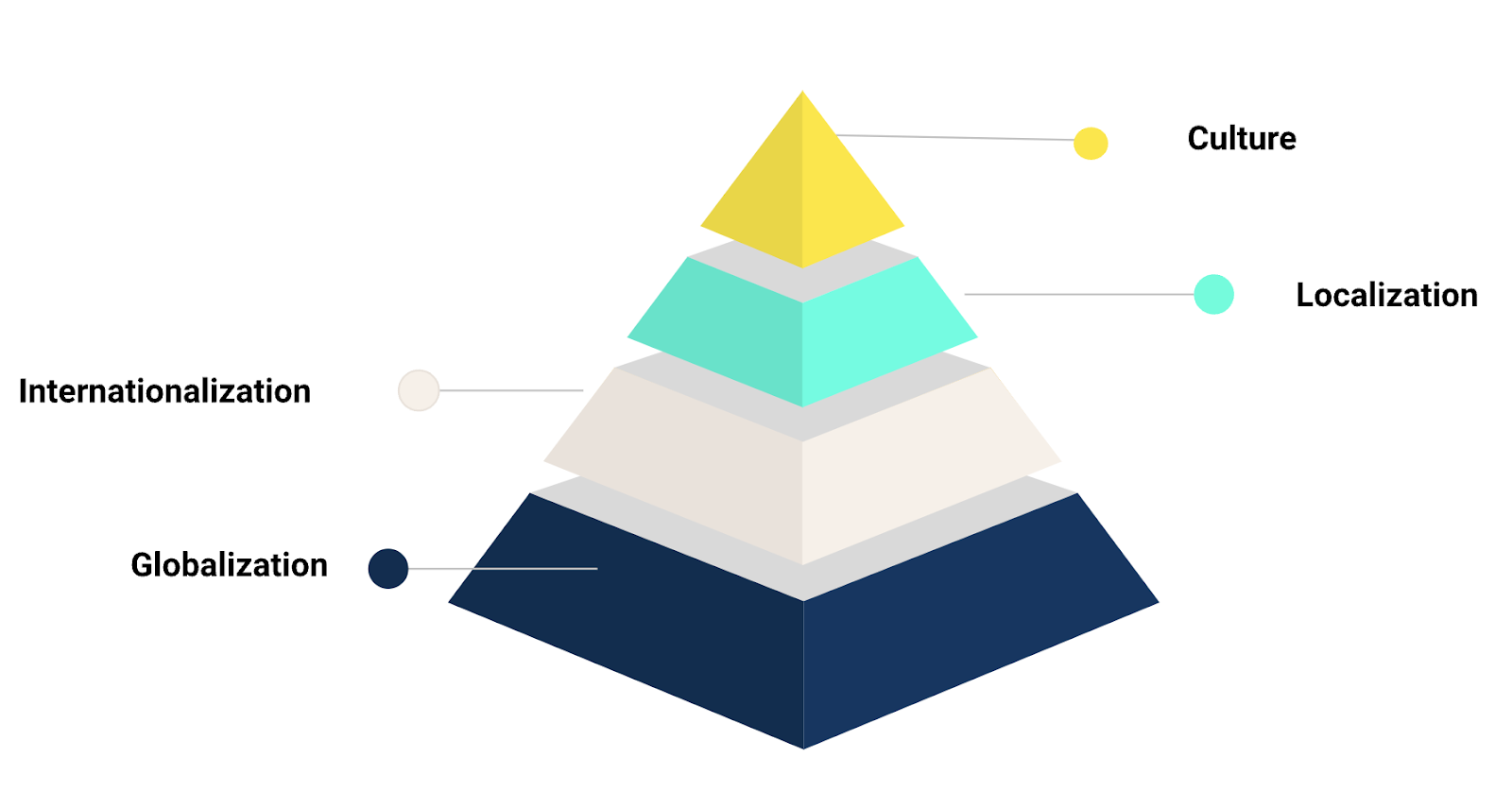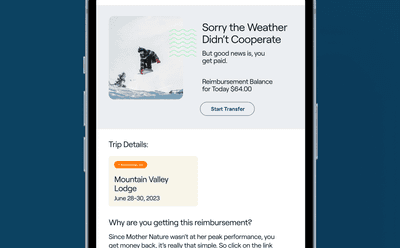
Why Sensible is Localizing Early
We’re baking localization into our product as a way to support partnerships outside the US.
By Annaliese Black
August 16, 2022
I’ve previously helped brands like Uber and WhatsApp create local experiences for their users—regardless of location or language—and I’m truly excited to help Sensible mitigate weather risks for consumers and businesses around the globe.
In my experience, every company anxiously awaits the day their product will “go global”. Yet in spite of this vision, most companies wait to consider their localization strategy until the end of the development process—when source content, design, and product requirements are already nailed down.
What if we thought about localization alongside product development, and intentionally baked it into our product instead of worrying about it post-release? How would this shape the product and our understanding of how to meet our global partners' needs?
At Sensible, we’re developing a localization strategy that covers every part of the user experience and channels those needs into product, design, and engineering requirements that we can consider as we develop our core experiences. We believe that doing so will help us create familiar experiences and build a foundation of trust for the future.
Simply put, we believe there’s a lot more to successful localization than just translation.
Defining localization
To grasp the key concepts of localization strategy, there are a few terms you need to know.
Globalization: In a business context, globalization refers to bringing a product or service to international markets by connecting with global audiences.
Internationalization: Ensuring source code and design are nimble enough to scale across the languages of the world. Internationalization makes a product “localizable”.
Localization: Adapting (and testing) a product so that it meets the language and cultural requirements of a target market.
Language Service Provider (LSP): A company that provides professional translations in addition to other linguistic services such as interpretation and subtitling.
Translation Management System (TMS): This tool centralizes translation and typically offers three core functionalities: project management/workflow automation, computer-assisted translation, and analytics reports.
Sensible’s localization strategy
As a team, we understand the value of having a product available in multiple languages. It makes sense that offering a product or service to a broader audience—in a language they understand—is the desired outcome.
The bigger question then becomes about creating a strategy to get there.
Our strategy aims to consider how the user experience touches almost every part of our business and how we can use this as an opportunity to address localization.
We’ve based our strategy on the six principles below:
Be scalable: We aim to build an internal infrastructure that can support one or 30 languages, allowing us to enter a market in any language or location. This includes internal tools and processes, alignment, and partnering with the right providers.
Bake in localization: One lever we can pull to bake localization into our product is to adjust our messaging so it scales globally. By eliminating US-centric language (it’s not a “ballpark estimate”, it’s a “rough estimate”) and tech jargon (it’s not “an ecosystem”, it’s “a community”) we shape our narrative as a global company with a product made for everyone. As an added bonus, cleaning up our content in this way makes it easier for our content to be localized.
Be intentional: We aren’t looking to get lucky by assuming the same thing that works for a waterpark enthusiast in Florida will work for a German tourist skiing in Switzerland. By crafting an intentional experience and getting feedback from partners we can glean insights into how our product is being used.
Build trust through design thinking: In my mind, Sensible’s design thinking is centered on a genuine interest in the people we’re designing products for. It helps us be more empathetic towards our target audience. By creating global personas, we're working to understand what partners in each new market want and need from a Weather Guarantee. This helps us to build trust with non-US audiences and acts as a guide for our decision-making.
Search for universal experiences with the weather: Searching for (and protecting against) the ways that weather universally impacts our experiences will help Weather Guarantees resonate with audiences wherever they're available.
Delight: We want using a Weather Guarantee to be delightful—and for partners to trust Sensible to provide ancillary revenue and reliable protection from the financial impact of bad weather. Understanding what is delightful for different cultures will influence everything from our customer service strategy to our design.
Localization begins before translation
With the principles behind our strategy laid out, we can now take the practical steps to put localization into practice.
The work that takes place before translation is an essential part of any language launch. It doesn’t really matter if everything is translated into French if you aren’t considering dependencies like legal compliance.
Below are the layers that we’re using at Sensible to think about the work that needs to happen prior to localization, and what functional applications we need in each layer.

Globalization: By addressing dependencies first, we can mitigate launch-blockers later. Some of these dependencies include payments and payouts outside of the US, supporting the native currency, and legal compliance. In Sensible’s case, it also includes Climate Data Portfolio Analysis, which requires comparing models and determining risk for particular regions based on a variety of forecasts.
Without addressing these areas, we can’t launch outside of the US.
Internationalization: I mentioned above that scalability was an important part of our strategy—and internationalization helps us do just that. We need our source code and design to be flexible enough to scale from English to Hindi, German, or any other language. Best practices include relying on industry standards for locale conventions, designing for text expansion (most languages tend to expand 20-30% on the English count), considering typefaces that create a cohesive experience across several languages, and avoiding hardcoding (e.g. we don’t want to hardcode punctuation, currency, time/date formats, etc.)
Localization: Although some work from every layer can be done in tandem, localization is made possible through internationalization. In this step, we think more about the actual translation process. This means understanding the value of partnering with an LSP for professional translations, or with a TMS for at-scale translation management. It also means building our own helpful resources to guide linguists (a brand style guide and glossary) and doing lots of testing on our end.
Culture: Considering a target market’s culture should be done throughout every single layer—we don’t need to wait until the end. Up until the localization step, we’ve essentially been trying to create an experience that can be adapted. This step is where we focus on how to intentionally make our product different. Cultural distance (e.g. launching from the US into Canada vs. US into Japan) may change the amount of effort needed to be culturally effective. Cultural considerations may manifest as design preferences, and ensuring every part of our product is culturally appropriate is an essential part of the localization process.
What’s Sensible working on now?
As we prepare to bring Weather Guarantees to the world, we’re focusing primarily on globalizing our product. Currently, the Sensible team is working on multi-currency support, and on supporting payment and payout options that work outside of the US. Our other efforts include staying legally compliant, and (from a customer service perspective) identifying how the needs of each new target market differ from the needs of US partners.
Simultaneously, we’re starting to think about the best practices for internationalization and localization. How would a TMS integrate into our internal systems? What resources do we need to have for linguists before they start translating? What kind of LSP would be a good fit for us?
Key takeaways
I’ve helped lead localization initiatives for some of the most recognizable names in tech and translation. And while joining a team of fewer than 30 people comes with its own challenges, there are a few takeaways that ring true no matter how big or small the team is.
- Starting early and considering every part of the user experience (not just the language) will allow us to build an intentional, familiar experience and not something that feels rushed.
- What works for English-speaking American partners doesn’t always work for global partners. We don’t have to understand every cultural nuance or linguistic use case to get started, but building a product that can accommodate these differences will help us down the road.
- Building localization principles that align with our broader company strategy will create a North Star to look to whenever we approach a new crossroads.

What is a Weather Guarantee?
Weather conditions can have a significant impact on the guest experience, especially for outdoor activities. The Weather Guarantee from Sensible Weather is a…

Sensible One of Fast Company's Most Innovative Companies
Sensible Weather named one of FastCompany's Most Innovative Companies in the world for 2025.

What is 1.5mm of Precipitation Per Hour?
1.5mm per hour of rain, what does 1.5mm of rain look like.

A note on the Los Angeles wildfires
How to help in the wake of the devastating wildfires in the LA area.
Connect with our team
Want to learn more about how Weather Guarantees can help your business? Schedule a call with a member of our Partnerships team today!
